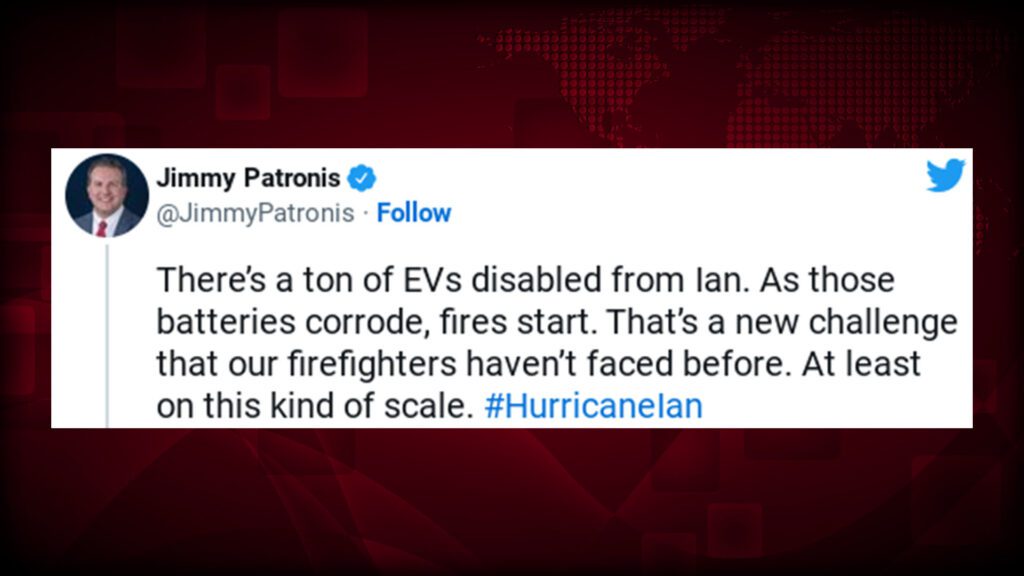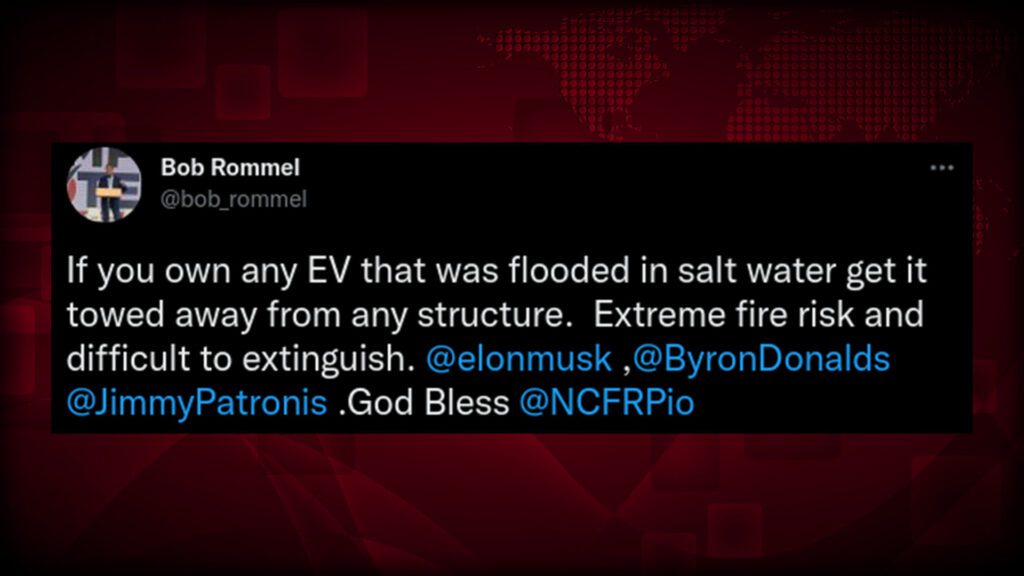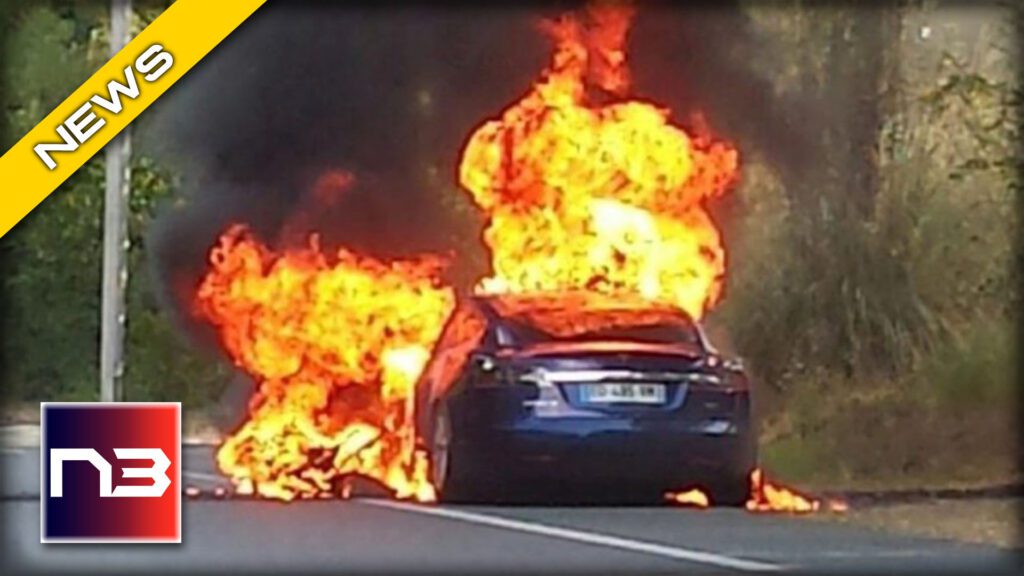Electric vehicles have been in the news a lot lately, and not necessarily in a good way. Just recently, Hurricane Ian hit Florida, and in the aftermath of the storm, electric vehicles were reported to be exploding. We have all of the details explaining the shocking reason why.
News breaks fast, make sure to catch it when it does, tap subscribe, enable notifications and never miss a report.
Electric vehicle (EV) owners in Florida are experiencing a unique problem following Hurricane Ian: their cars are catching fire.
According to the Post Millennial, Florida’s North Collier Fire Rescue extinguished a stationary but burning EV on Thursday, highlighting the dangers of these electric vehicles.


Florida’s Chief Financial Officer and State Fire Marshal Jimmy Patronis tweeted, “There’s a ton of EVs disabled from Ian. As those batteries corrode, fires start. That’s a new challenge that our firefighters haven’t faced before. At least on this kind of scale. #HurricaneIan.”
There’s a ton of EVs disabled from Ian. As those batteries corrode, fires start. That’s a new challenge that our firefighters haven’t faced before. At least on this kind of scale. #HurricaneIan pic.twitter.com/WsErgA6evO
— Jimmy Patronis (@JimmyPatronis) October 6, 2022


Bob Rommel also tweeted, “If you own any EV that was flooded in salt water get it towed away from any structure. Extreme fire risk and difficult to extinguish.
If you own any EV that was flooded in salt water get it towed away from any structure. Extreme fire risk and difficult to extinguish. @elonmusk ,@ByronDonalds @JimmyPatronis .God Bless @NCFRPio pic.twitter.com/0rzW8ljHpK
— Bob Rommel (@bob_rommel) October 6, 2022


Bob was thanked by the North Collier fire department for being on the scene to see firsthand how difficult these fires are to control.
According to Sciencing, fresh water conducts electricity very poorly, but salt water does. A salt molecule is soluble in water, and it is composed of sodium ions, which have a positive charge, and chloride ions, which have a negative charge. Batteries, like all sources of electricity, have two terminals, a positive and a negative. Even when dry, salt water-soaked batteries have this conducive material that spreads the current, sparking and catching adjacent materials on fire.
The Today show also reported on another problem EV owners face in the aftermath of Ian: the inability to charge if local power is down.
As noted by FOX, a green transition to zero-emission cars continues to be promoted by the Biden administration, resulting in an increasing number of consumers turning to EVs. According to Kelley Blue Book, EVs accounted for 5.6% of new car purchases in the U.S. between April and June.
EVs may be the future of transportation, but as this story shows, they are not without their problems. The last thing we need is for Americans to be forced into driving EVs when there are still so many unknowns about them. Let’s wait until the technology has progressed more and EV owners no longer have to worry about their cars catching fire before we make the switch.
Let’s continue this conversation, in the comments below.



